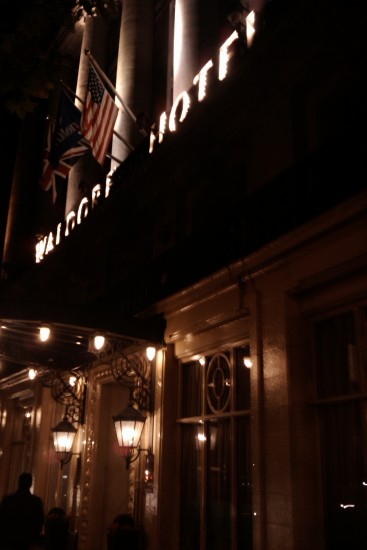by Jude Rogers.
12. Night Lines.
It is late on a schoolnight, and I have been out dunking dim sum and swishing bottles of cider with an old friend. I love nights like these; when it is early summer, still warm, and there is only a tiny need for the of weight of a jacket. I also love walking at night on my own, but never too far – and always on lit roads (so don’t worry, Mam) where people meet and mingle as the day closes in.
I kiss Ailsa goodbye on the South Bank, and she sets off for the station. I gaze doey-eyed across the river at the Savoy. These are the moments that London comes into her own.
a. The thoroughfare outside the bar is peppered with people loathe to leave their pints behind. Tables are being cleaned hastily, and chairs stacked up speedily. It’s as if everyone wants their own piece of the evening, to be out here with all this, not inside with reality.
The sign to the Riverfront Café soothes with its white, gentle neon. Inside, silence starts to settle, and I think of Edward Hopper’s Nighthawks, transported to this quietening corner just south of the Thames. For a moment, I wish I had a red dress, flame-red hair, and a cigarette to light.
b. To get to the bridge, we have to weave through the concrete. I walk up to the Hayward Gallery, newly opened, and gleaming. A set of steps beckons me down to the BFI as I pass it, its bold yellow paint even brighter at night. I resist these advances, remembering the time and the shadows, and instead ascend to the busy main road.
I look down at the street lamps dotting the riverside, curving like a glow-worm as they head slowly to Lambeth.
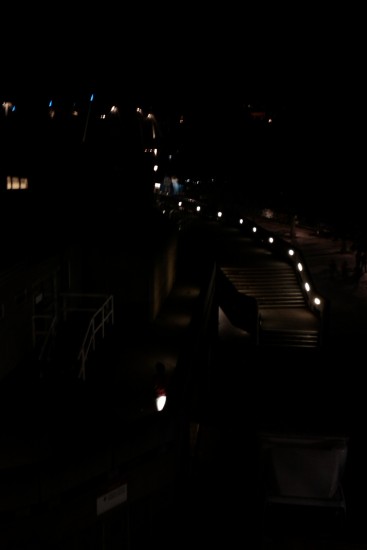
c. Every time I reach Waterloo Bridge, I have to remember to breathe: the right-angled hip of the capital is still my favourite bit of London. Because of its place on the river-bend, it opens up everything for us. Westminster looming to the left, the city ruling to the right, the flickering hat of One Canada Square being tipped in the distance.
To the south, the National Theatre burns blue like the flame from a match. To the west, the London Eye looks like a circle of pearls. To the north, underlights make buildings gleam like ghostly baubles. The road stretches ahead of me, nearly black, but still beautiful.
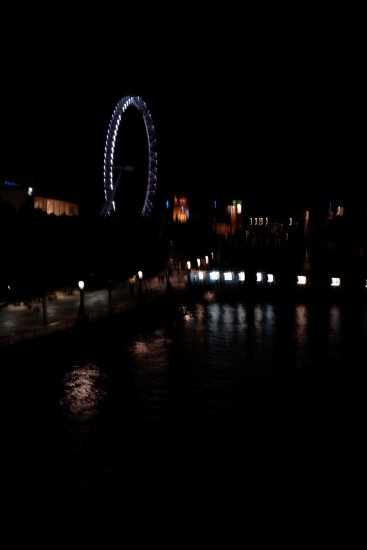
d. The bridge is still busy as it creeps past eleven. An old man in a crumpled suit hails a taxi with his walking stick. Two lovers hug themselves drunkenly across the wobbly pavement. A teenage boy on his own leans against the bridge, beaming. I try and take more pictures, but my camera flash will not spark. But as buses shoot across the tarmac, leaving trails like fast fireflies, I realise that the colours in my viewfinder look much more fitting without it. Instead, they properly capture the late evening’s peculiar beauty.
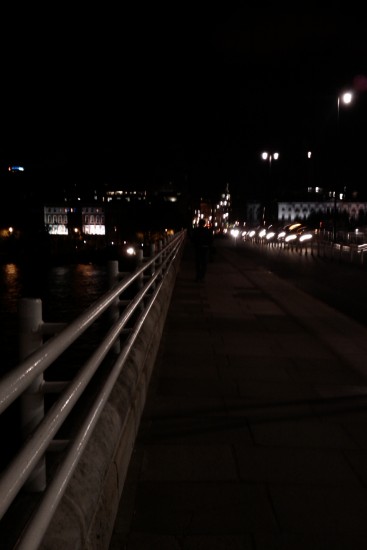
e. At the other side, Somerset House shimmers. Captured on camera, its edges are in shadow, so it looks like it is floating out of the blackness. I pass a murky underpass, and stride towards The Strand, passing shuttered-up shop fronts, approaching the bus stop for home.

In one window, a security camera projects my lower body onto a small screen. I take a photograph of it – it splits into four quarters – and I suddenly feel like Kiefer Sutherland in 24. Then, a few doors up, a party lamp still spins, and I think of the glorious, cheap thrills of nightlife it promises. Night-time in London is all about surveillance and survival, and as coloured squares scatter onto the street and the shopfloor, I dance across the street, willing my chariot to come.
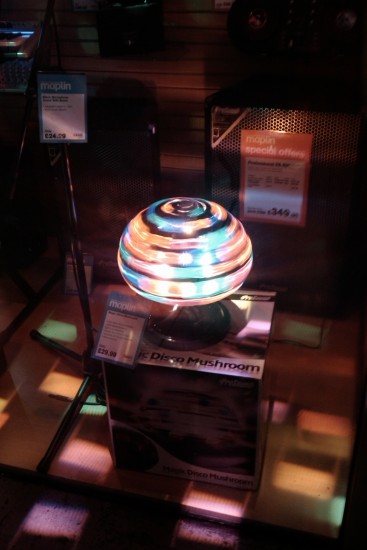
f. By two old red telephone boxes, a new underground club promises fetish fun and late drinks. Past the Indigo Restaurant, the 243 promises bed. I get to my bus stop, sitting outside the Waldorf Hotel, a place full of mint julep-flavoured memories of nights that long ago. I smile as I remember them, and my bus turns the corner. As the lights sparkle above me, I know I wouldn’t change things for anyone. I am still me, after all, and this is still my city.
